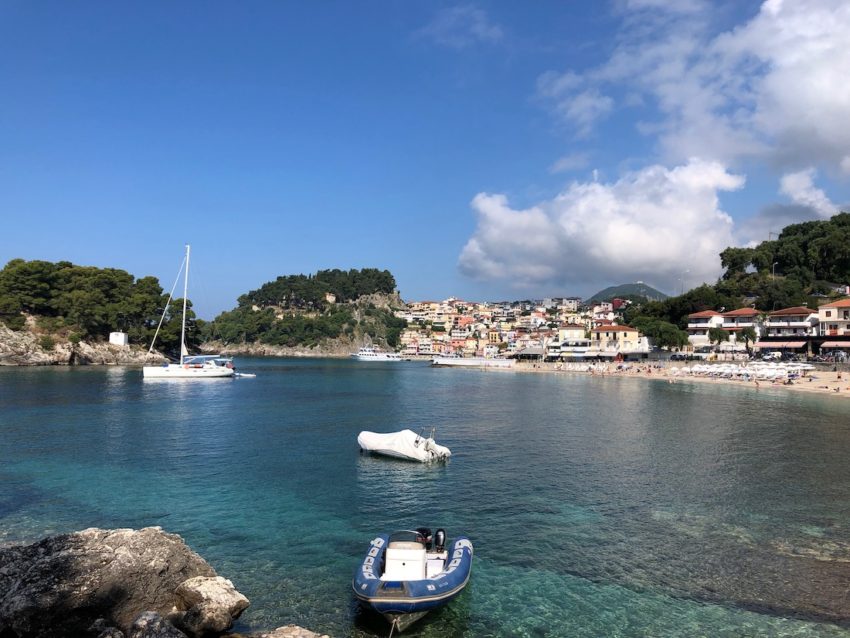Greece may be a part of Europe but there are times when it feels like a world apart.
Epirus, the region in the country’s north-west, is wild and rugged, remote and peppered with ruins. It’s a land of mountains and broad valleys, lakes, striking bays and cliffs that plunge to the sea. Driving through, it feels like the home of bandits and smugglers from times long gone. Then there are the locals, dressed in fashions that would’ve been outdated in the 70s, and older women with 50s hairdos supported by enough hairspray to constitute a fire hazard. With the sultry Mediterranean climate, the pace of life is necessarily slower but time has slowed up too…
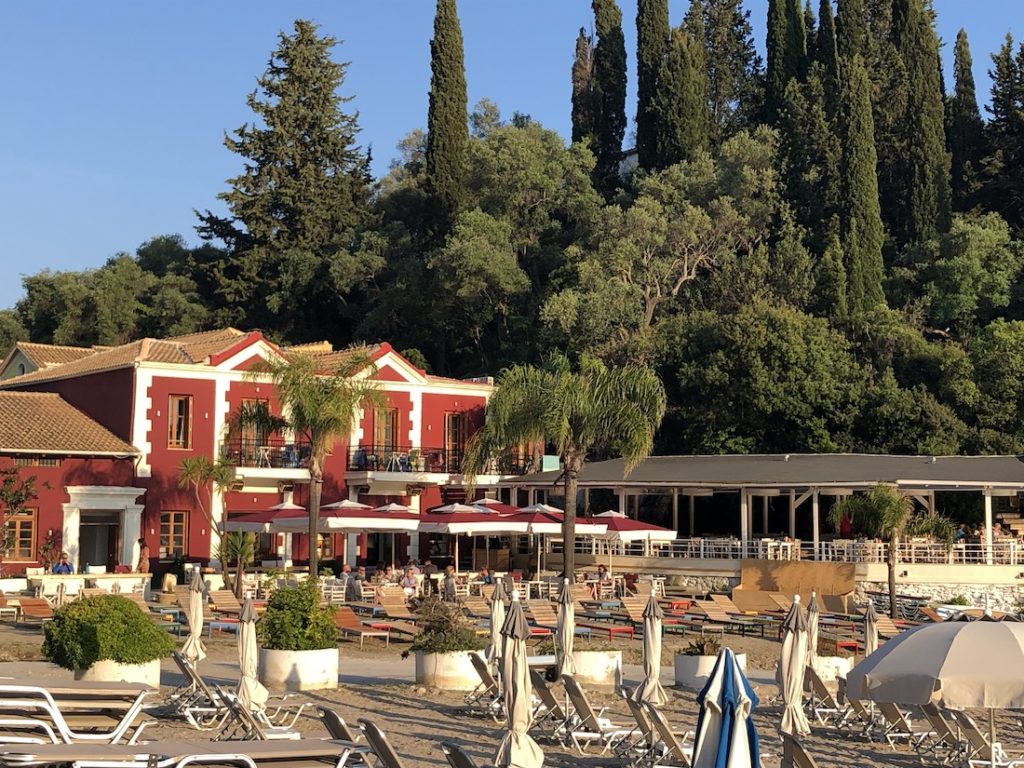
We were in Epirus in early June staying in Parga, one of the prettiest and most popular beach resorts in the region; a town that gazes out towards the islands of Paxos and Antipaxos in the Ionian Sea. The hour-long drive north from Preveza airport took us up and down mountains on a dreadfully worn highway, but one with signposts to a wealth of sites that speak to the region’s rich classical history. At times the coastal views were spectacular.
We descended into picturesque and colourful Parga, its ancient and modern buildings crowding the hills that tumble down to the sea. The mountains beyond have helped protect it from the worst excesses of mass tourism developments, while the historic heart clusters around the harbour and is a mass of twisting, narrow alleys. Nowadays those pedestrianised streets are busy with tourists browsing the numerous boutiques and low-rent souvenir shops, cafes and eateries. The seafront is an endless parade of restaurants and bars geared mostly to holidaymakers. In high summer Parga is notoriously busy, in June it’s manageable and during our stay it was noticeable that most visitors were of the aged variety. Wandering around, we didn’t have to look far beyond the commerce to spot tiny chapels, quaint cottages and dereliction.

Everywhere we went we were wooed by the pungent, hypnotic scent of jasmine, while oregano, rosemary and countless other herbs filled borders. The vibrant pinks and purples of bougainvillea, grape vines and citrus trees added colour and interest to the streets, and hills crowded with olive trees reminded us that the fruits that have long been farmed and processed locally. Stray cats wandered about, searching for food.
The modest bay around which Parga developed is so picturesque it’s almost a cliche, and at one end stands the Villa Rossa. A charming historic property, built in 1903 for a tobacco exporter, it’s now a boutique hotel and was our base for the week. We stayed in the adjacent Rosanea, which was built later as a store for the boss’s tobacco, in a large and characterful room with much polished concrete and plywood fittings.
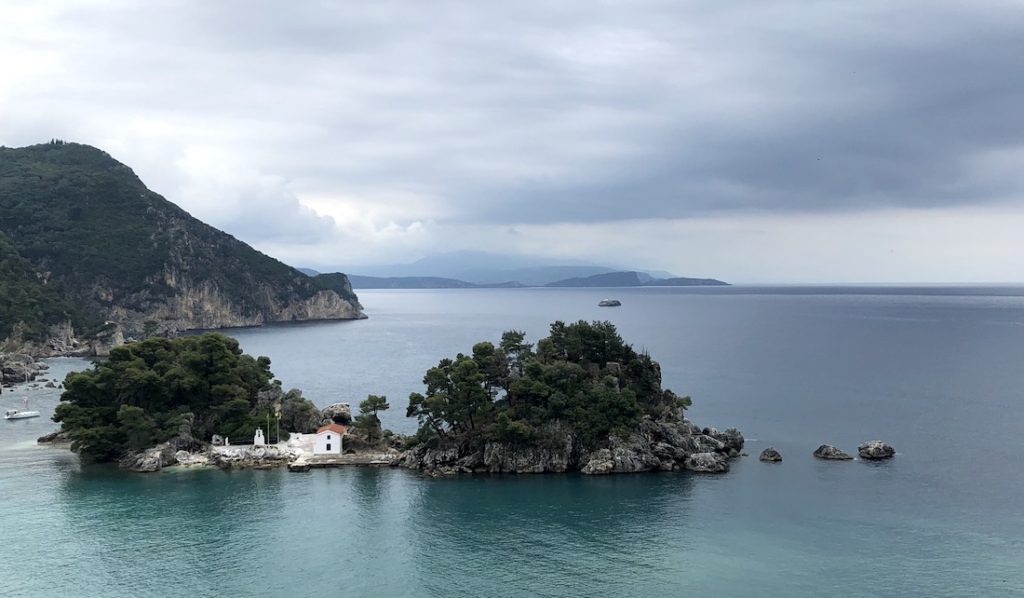
At the other end of the bay on a promontory stands Parga’s 1,000-year-old castle, which has been rebuilt many times over the centuries, at times by invading Venetian and Ottoman forces. We climbed the steep lanes to take a look around on a dull and cool day but the ruins are much overgrown. Trees have taken root in the old walls and it’s nigh-on impossible to work out what the castle would’ve looked like, let alone what the surviving structures represent, and the single information board is woefully inadequate. So we crept through the undergrowth to take a closer look and walked round the headland on a sometimes treacherous footpath to get views of the touristy Valtos beach to the north of Parga. The castle is a bit of a missed opportunity and much of the site is now dominated by a cafe/restaurant, which I assume wasn’t around to serve the all-conquering Ottomans.
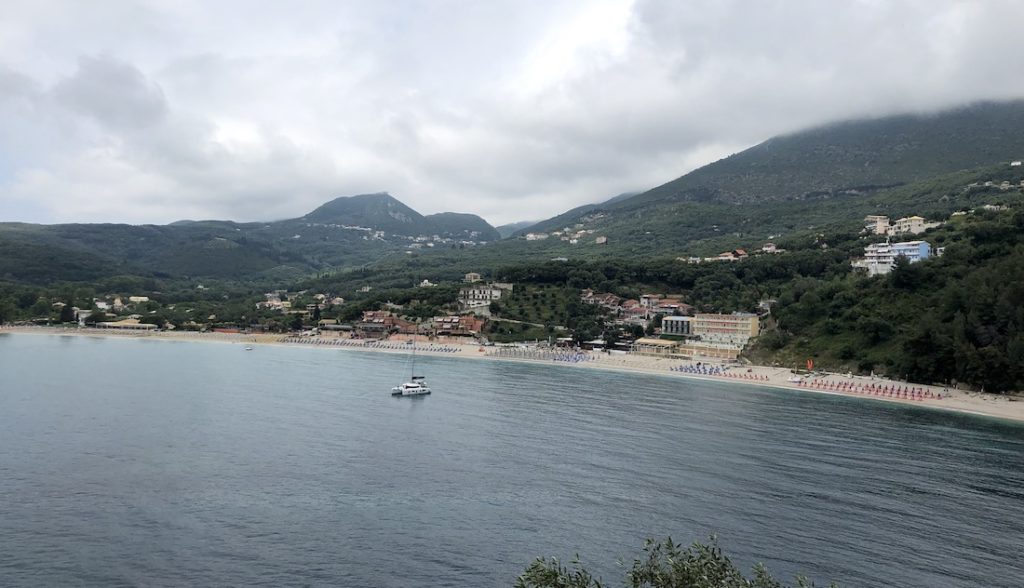
The weather was unseasonably wet and chilly early in the week but once the sun came out and the temperature climbed we did what we promised we would do, and that was to recharge our batteries on our hotel’s private beach. We read, drank and enjoyed lazy lunches in their outdoor restaurant, served by friendly staff. At times I went for a dip in the calm waters of the bay, which are protected by a string of rocky islets and the more substantial Panagia island. I joined several others in swimming and walking across to it (the water is shallow enough to walk all the way) and while it’s a real beauty spot, its charm is ruined by the piles of litter and empty cans of Mythos lager I found while exploring.
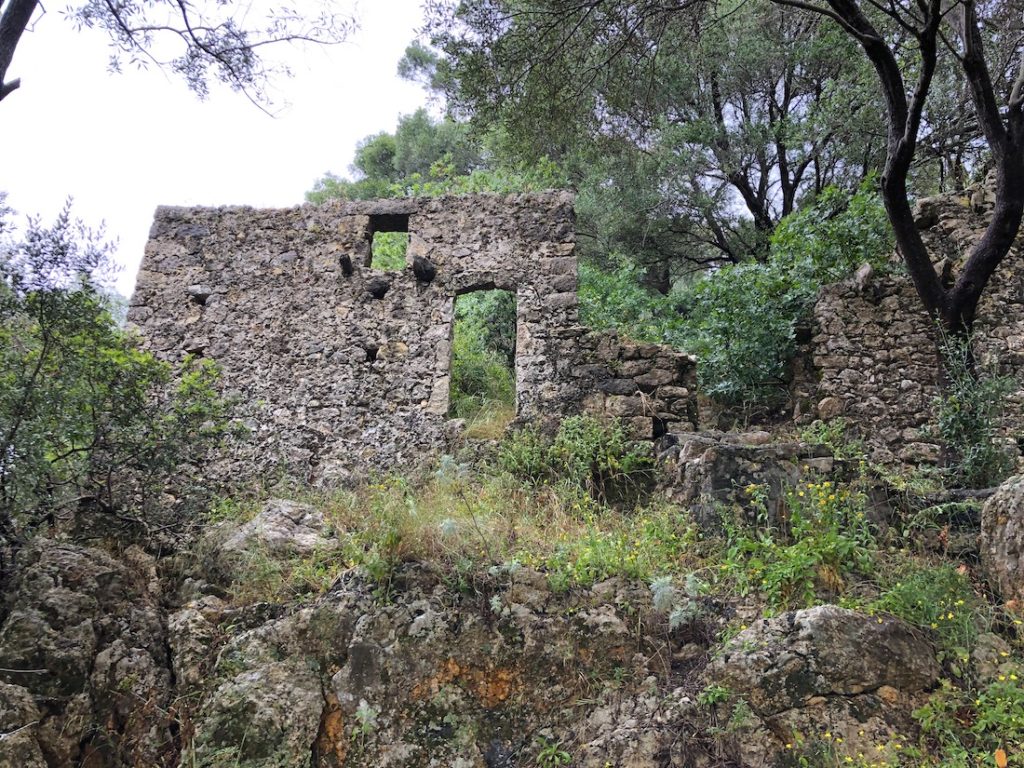
We ate our evening meals in the hotel restaurant a few times, the sun setting to the west and casting the whole town in a gorgeous golden glow. On other evenings we walked out of town to the south, to eat in the rustic Perivoli and the more expensive and fancy Five Senses. But other than in our hotel, it was difficult to find variety in Parga’s restaurants so we ended up looking at the same old menus of souvlaki, moussaka, Greek salads and kleftiko. After eating, we could normally be found in one of the seafront bars nursing a bottle of Greek wine, a lager from Corfu Beer or a pale ale from the Epirus Brewery in Ioannina. Our favourite stops were Bianco Resort, The Old Garden and Geoker. Perhaps the most bizarre place was the Blue Bar, a garish refugee from the 1990s with awful decor and a tatty cocktail menu complete with a letter of praise dating from 2005!
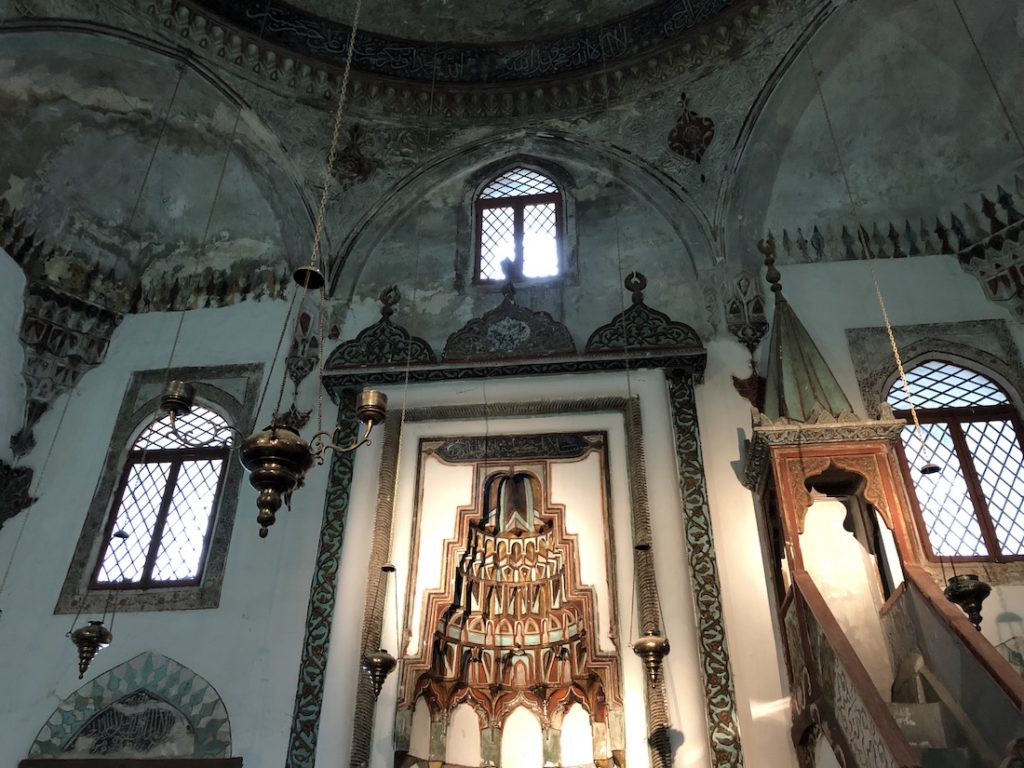
With the weather looking dodgy early in the week, we drove out to Ioannina, home of the Epirus Brewery and a place that Lonely Planet optimistically describes as “one of Northern Greece’s most atmospheric cities. It is set on the western shore of the lovely Lake Pamvotis, and framed by the impressive mountain range that turns lilac at sunset. The walls of the Kastro enclose an atmospheric, tranquil old quarter”. The drive through the mountainous lands of Epirus was spectacular enough but the low cloud and driving rain didn’t do much to raise my spirits. Anyway, I got the feeling that someone at the Ioannina Tourist Board had twisted arms to have their city described so grandly by the guidebook because it looked pretty average to me. Of course, we may have missed the best bits as we ran around trying to dodge the downpours, umbrellas primed, seeking shelter. The lake was windswept and the surrounding hills oppressed by low clouds.
The old town does have some atmospheric alleys and buildings and is surrounded by sturdy defensive walls, reflecting the Christian and Islamic history of the city and a series of invasions, but much of the castle is lost today. The city ethnographic museum lies within the complex and is full of knick knacks, many from local families, and we wandered about in deathly silence trying to make the most of it. The nearby Byzantine museum is largely a collection of gaudy religious art, which couldn’t be further from my cup of tea if it tried.

The outstanding sights within the castle are its compact mosques. The 17th century Aslan Pasha mosque, in which the ethnographic museum is housed, is a glorious example of religious architecture with a magnificent and colourful pulpit. The other is the Fetihie mosque located in the south-eastern part of the castle next to the tomb of Ali Pasha, one of the most famous of the Ottoman rulers of the region. Some original decoration of the walls and domes remains and very impressive it is too.
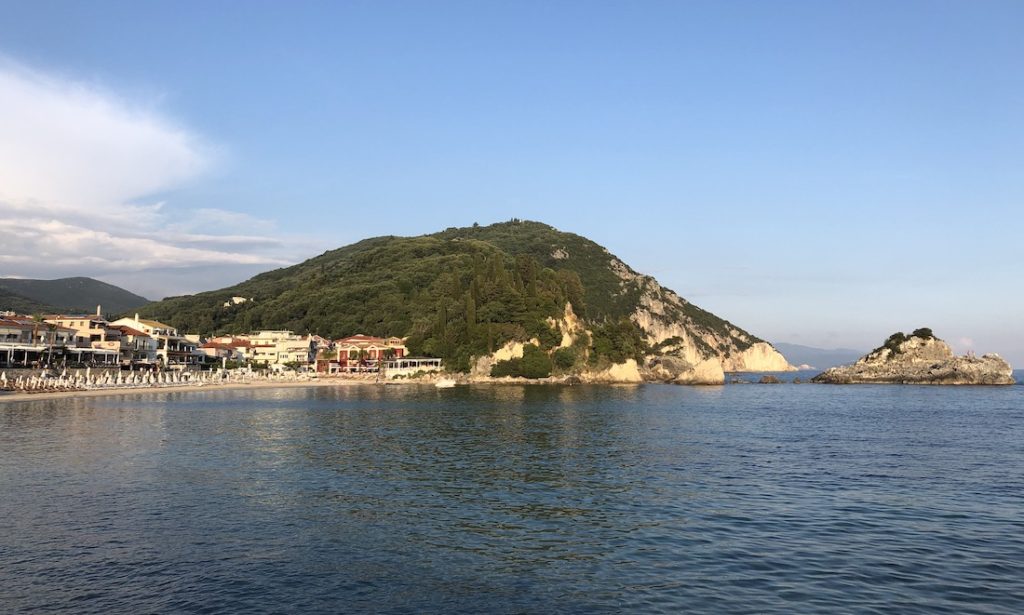
But it will not be Ioannina that I remember most fondly from our week in Epirus. As we drove south ready for our return to Heathrow on a British Airways A320, it will be the beautiful bay in which Parga lies, the heady scent of jasmine and the lazy sunny days by the beach.

